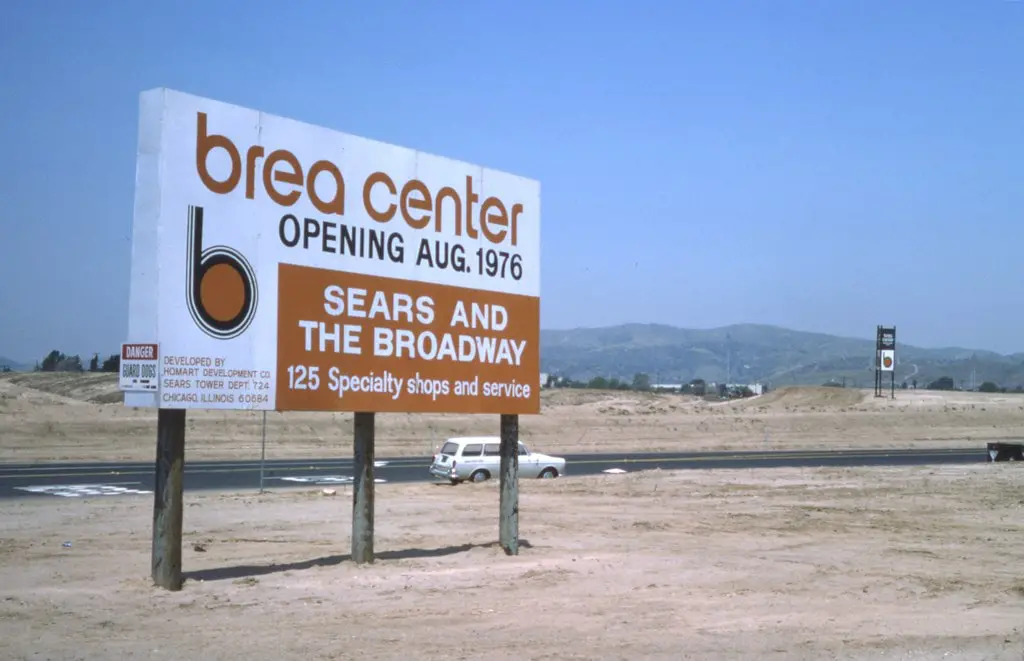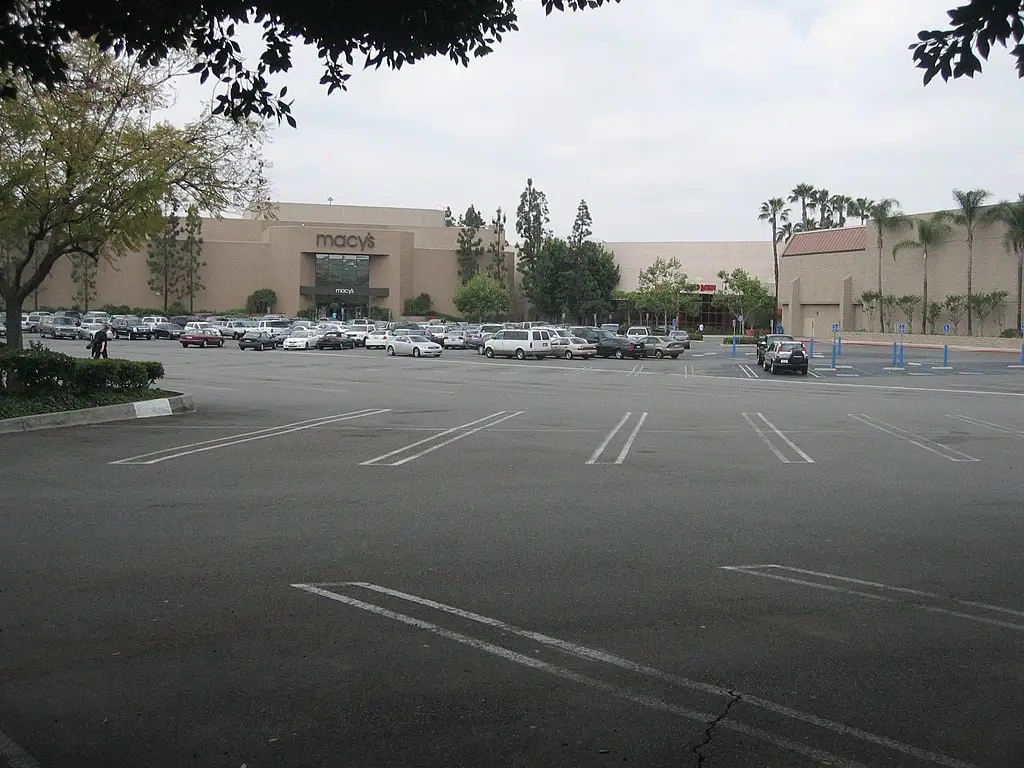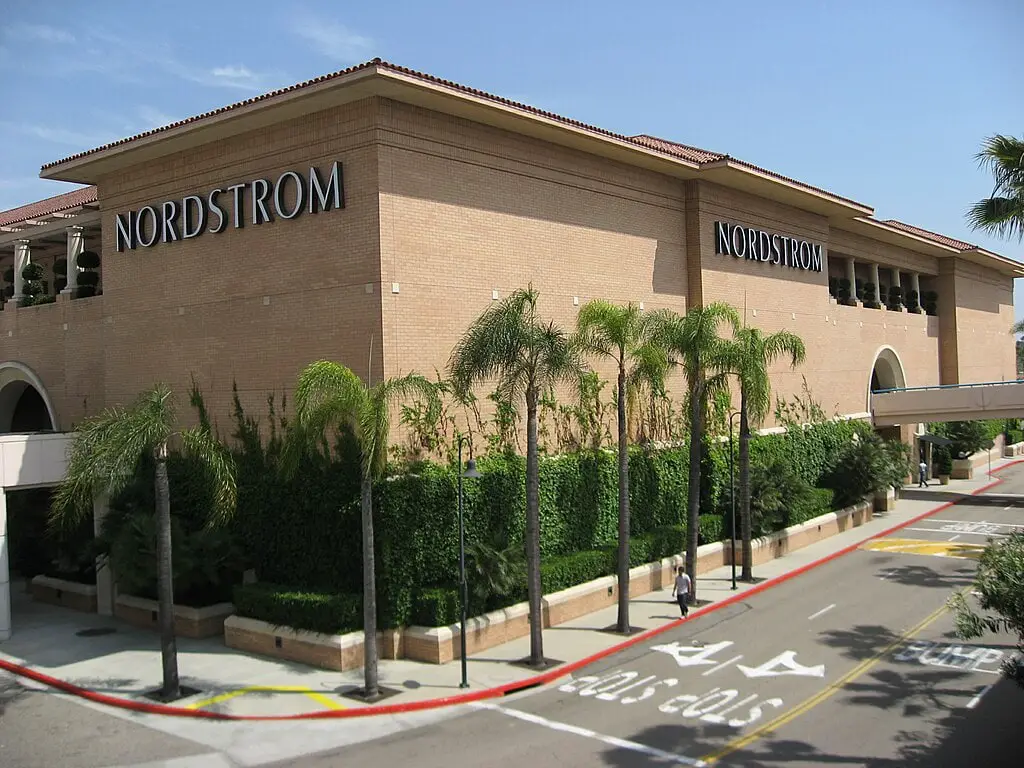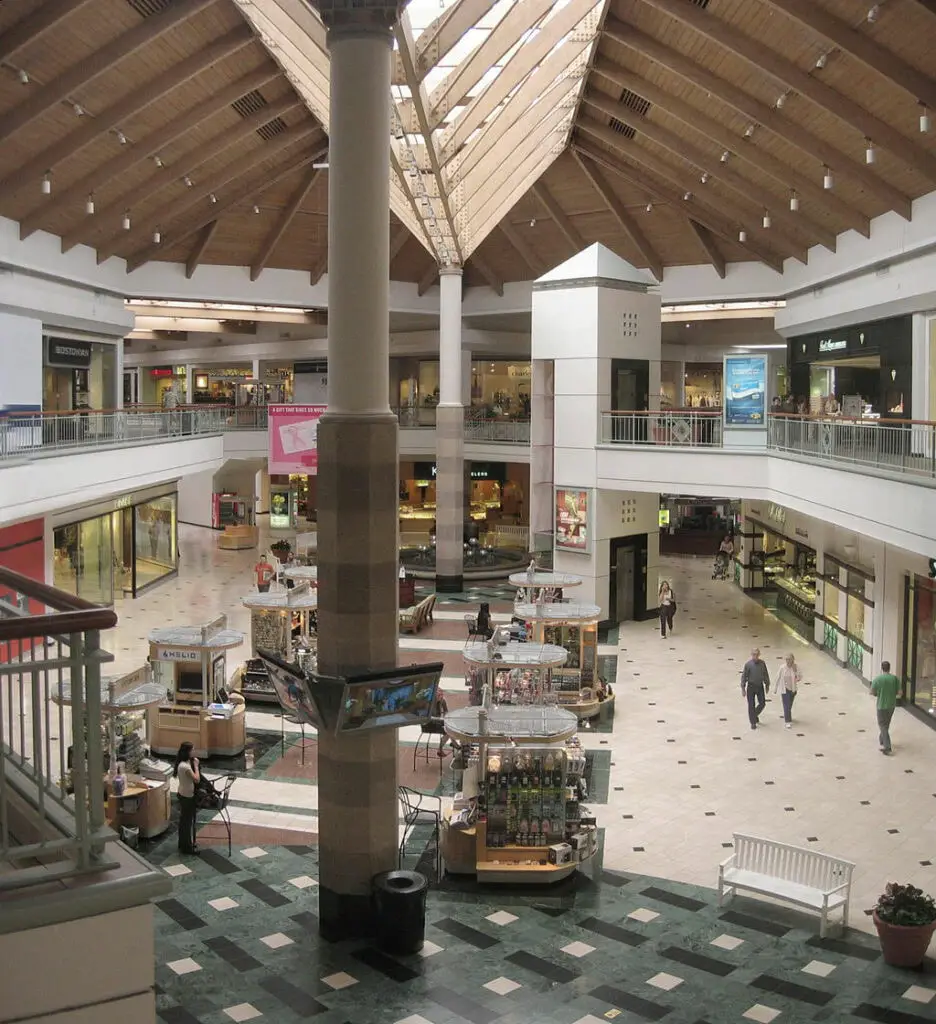Early Development and Opening
Brea Mall, located in Brea, California, opened its doors in 1977. Homart Development Company developed the mall.
The initial anchors included Sears and May Company California. Situated next to the Orange Freeway, the mall quickly became the dominant retail center in the area.
In 1977, the Brea Mall hosted its grand opening, which attracted a lot of attention. At the time of its opening, the mall featured around 20 specialty shops, with Sears already operational.
The May Company opened shortly after, with more shops following suit. The grand opening event underscored the mall's role as a major commercial hub.
This addition attracted more shoppers and established Brea Mall as a key player in the regional shopping landscape.
The mall continued to grow throughout the late 1970s and early 1980s. Its strategic location and robust retail offerings made it a popular destination for shoppers.
It attracted major retailers and developed into a prominent shopping destination. The mall's initial success paved the way for future expansions and the introduction of more retail and dining options, making it a central part of the community and one of the key things to do near Los Angeles, CA.
Expansion and New Anchors
In the early 1980s, Brea Mall expanded its retail footprint. The addition of The Broadway store played a crucial role in this growth. This store attracted more shoppers and provided a wider variety of merchandise.
Around this time, Nordstrom opened its second store in California at Brea Mall, marking an important development in the mall's history.
In the early 1990s, the mall underwent further expansion. J. W. Robinson's and a larger Nordstrom were constructed. This period saw the mall's retail space increase, allowing for more stores and services.
The expansion included a Y-shaped addition to the main mall, which provided more retail space and improved the overall shopping experience.
In 1993, The May Department Stores Company merged with J. W. Robinson's and May Company California, leading to several changes within Brea Mall.
The J. W. Robinson's store was sold to JCPenney, which moved from Orangefair Marketplace in Fullerton.
The May Company California location was renamed and expanded, enhancing the mall's retail options.
Throughout these years, Brea Mall continued to attract major retailers and more shoppers. The addition of new anchors like The Broadway, Nordstrom, and JCPenney strengthened the mall's position as a premier shopping destination.
The continued expansion and addition of new stores enhanced the mall's appeal and contributed to its ongoing success.

Mergers and Conversions
In 1996, Federated Department Stores acquired The Broadway's parent company, Carter Hawley Hale Stores.
This acquisition led to the conversion of the Broadway store at Brea Mall into a Macy's, which brought new merchandise and shopping experiences to the mall.
The 2006 merger of Federated Department Stores and The May Department Stores Company brought additional changes.
The Robinsons-May location at Brea Mall was converted into a Macy's furniture store. This conversion brought more variety to the mall's offerings, catering to shoppers looking for home furnishings.
These mergers and conversions brought new life to the mall during the late 1990s and early 2000s.
Macy's, with its wide range of products, became a key anchor store, attracting more visitors. These changes kept Brea Mall relevant and competitive in the retail market.
The frequent changes in anchor stores and the introduction of Macy's in multiple formats kept the mall dynamic. It showed the mall's ability to adapt to the evolving retail landscape. This adaptability ensured that Brea Mall remained a top shopping destination for many years.
Physical Changes and Features
Brea Mall has seen many physical changes over the years. In the late 1970s and early 1980s, the mall featured an ice skating rink, which added a unique attraction for visitors. However, the rink was removed later to expand the food court, allowing for more dining options.
The mall covers a total retail floor area of over 1,280,000 sq ft. This large space hosts 180 specialty shops and boutiques, offering a variety of products and services.
The main department stores include Macy's, Macy's Men's & Home, JCPenney, and Nordstrom, each occupying a sizable area within the mall.

In 2018, Sears closed its doors, marking the end of its long presence at the mall. Simon Property Group, which owns and operates Brea Mall, announced plans to repurpose the Sears space.
The mall's layout includes two main floors, with three floors in the main Macy's and additional floors in Nordstrom for offices.
The mall's design and structure have adapted over time to meet the needs of shoppers and businesses, enhancing the overall shopping experience.
Community and Transit Access
Brea Mall plays a vital role in the local community. The mall's location next to the Orange Freeway makes it easily accessible to residents and visitors.
Public transit options include OC Bus routes 57, 129, and 143, as well as Foothill Transit route 286.
These lines provide convenient access to the mall for those who prefer to use public transportation, making it easier for a broader range of people to visit.
Throughout the year, Brea Mall hosts various community events and activities. These events draw people from the surrounding areas, fostering a sense of community and engagement.
The continuous evolution of Brea Mall, including its transportation access and community involvement, keeps it relevant and integrated into the daily lives of people in Brea and the surrounding regions.
The mall's ability to adapt and grow ensures that it remains a key destination for shopping and activities.

Latest Developments and Redevelopment Plans
In 2023, Brea Mall embarked on a major redevelopment project. Simon Property Group announced a multi-million dollar plan aimed at transforming the mall into a mixed-use space.
The project includes new retail and dining options, a resort-style fitness center, luxury residential buildings, and a spacious outdoor plaza.
This redevelopment started in May 2023, with the demolition of the old Sears building.
The new plan features a 119,000-square-foot streetscape designed to attract shoppers with brands like Zara and Dick's Sporting Goods and new restaurant concepts such as Pacific Catch, Din Tai Fung, Philz Coffee, and The Melt.
Additionally, Life Time Fitness will be a major feature that provides health and wellness services.
The Brea City Council approved this mixed-use development, which will add 380 new apartments, including some affordable housing units.
These residential units will provide plaza views and on-site parking, integrating living spaces with shopping and dining.
The project aims to create a vibrant community where people can live, work, shop, and recreate without relying on cars.
The redevelopment also includes nearly an acre of green space, which will host seasonal outdoor gatherings and events, further enhancing the community feel.
This green space is expected to benefit both residents and visitors, providing a place for relaxation and community events, which will, in turn, support the surrounding businesses.

This transformation is part of a broader trend seen in other Orange County malls like Westminster Mall and Laguna Hills Mall, where similar projects are underway.
These developments respond to the evolving retail landscape and the growing need for housing, especially in sunny Southern California.
Simon Property Group's redevelopment of Brea Mall highlights its commitment to keeping the mall relevant and appealing.
By integrating retail, dining, residential, and recreational spaces, Brea Mall will remain a central part of the community for years to come.
